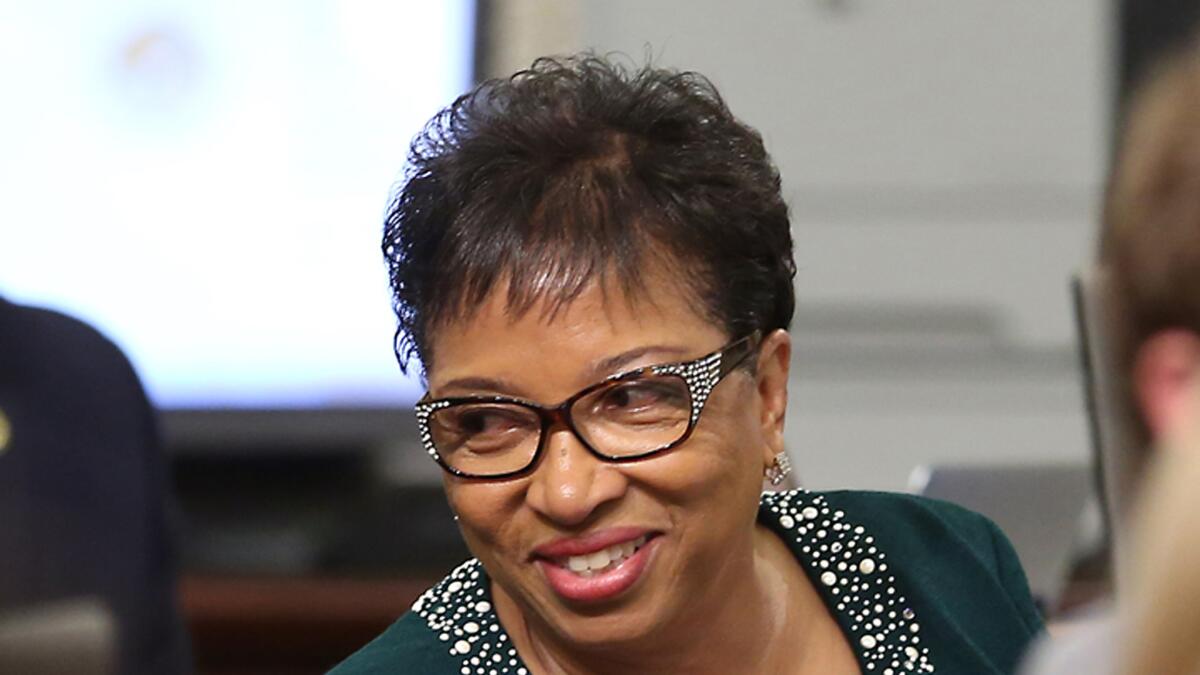Opinion: The big winners in California’s open primaries: big spenders

When Californians endorsed open party primaries in 2010, it was with the promise that getting rid of the old closed system would spark competitive legislative races. It wasn’t hard to resist such an assertion, since by then the state’s primary elections had become little more than an anointment of party hacks who too often represented extreme ends of political ideology (think socialist Bernie Sanders and theocratic Ted Cruz).
Well, competition we got, if not exactly in the way it was expected. Instead of a system in which ideas and debate were the main currency, in many cases actual currency remains king, and the competition has taken the form of proxy battles between wealthy special interests. In a number of tight races this week, those interests were oil and business groups on one side supporting business-friendly Democrats against environmental interests and labor unions on another, pushing progressive, climate change-concerned candidates.
A record amount of money was spent in this year’s primary races, $29 million in direct campaign donations and independent expenditures. And more records will probably be broken in the lead-up to November. One of the biggest spenders was the oil industry, which dropped millions into legislative races. Chevron alone reported contributing more than $407,000 directly to individual candidate and $5.38 million to committees, including the “Coalition to Restore California’s Middle Class, including energy companies who produce gas, oil, jobs and pay taxes” -- which is wholly supported by the oil industry.
The investment seemed to have paid off. The candidates on whom the oil industry concentrated its largesse did well enough in the primary to secure spots in the November runoff: Assemblywomen Cheryl Brown (D-Bernardino), who is facing a tough challenge by a candidate backed by environmental and labor interests; Nora Campos (D-San Jose), who is termed out of the Assembly and hoping to knock off incumbent Sen. Jim Beall (D-San Jose); and Cecilia Aguiar-Curry, the mayor of Winters, who is vying for an open Assembly seat in a Northern California district.
To a lesser extent, three other Assembly candidates benefited from oil cash: Raul Bocanegra, who is trying to regain the San Fernando Valley seat he lost two years ago to Patty Lopez (D-San Fernando); Blanca Rubio, a Baldwin Park school board member trying to win an open seat in the San Gabriel Valley; and Jim Cooper (D-Elk Grove), a co-chair of the Assembly’s moderate Democrat caucus who is running for reelection.
Another promise of the open primary experiment was the emergence of more moderate candidates. We got that, too, as evidenced by the growth in the ranks and power of the moderate Democratic caucus in recent years. Last year the mod Dem block flexed that power by scuttling a key provision to cut petroleum use in the climate change bill, SB 350.
Is this a better system than the closed primary of the past? That depends on whom you ask. But it’s safe to say that the open primary system delivered on its promise to seriously shake up California’s elections.
(On a related note, Assemblyman Adam Gray [D-Merced] is evidently a fan of open primaries. On Thursday he proposed a constitutional amendment that would mandate open primaries in presidential elections, too. It’s probably a nonstarter, since federal elections are different animals than state, but who knows?)
Follow me on Twitter @marielgarzaLAT
More to Read
A cure for the common opinion
Get thought-provoking perspectives with our weekly newsletter.
You may occasionally receive promotional content from the Los Angeles Times.







